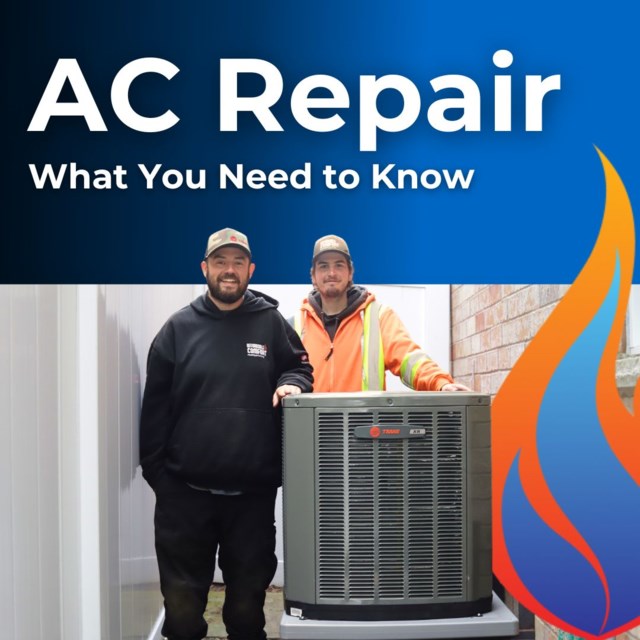
As a homeowner in Collingwood, a well-functioning air conditioner is key to staying cool during the hot summer months. But how can you tell when your system is just under strain—or actually needs professional repair?
Common Signs Your AC Needs Repair
Air conditioners typically show signs before breaking down completely. If you’re experiencing any of the issues below, it may be time to call in a pro:
Your AC Is Blowing Warm Air
If cool air isn’t coming through the vents, it could be a sign of low refrigerant, a broken compressor, or a faulty thermostat.
Weak or No Airflow
Poor airflow may point to a clogged air filter, blocked ductwork, or a failing blower motor—all of which reduce your AC’s effectiveness.
Unusual Noises
Banging, rattling, or high-pitched squeals often mean something’s loose, worn out, or stuck inside the unit. These noises shouldn’t be ignored.
Frequent Cycling On and Off
If your AC is turning on and off more often than usual, the issue could be a dirty air filter, a malfunctioning thermostat, or a unit that’s not sized properly for your space.
Higher Energy Bills
A sudden spike in your electricity bill could be a warning sign that your AC is overworking to keep up due to worn parts, dirty coils, or refrigerant issues.
Water or Refrigerant Leaks
Puddles near your unit may be caused by a clogged drain line, while refrigerant leaks are more serious and require immediate attention from an HVAC professional.
How Much Does AC Repair Cost in Collingwood?
AC repair costs vary based on the issue and its complexity. Here's a rough guide:
Air filter replacement – $75–$200
Thermostat repair or replacement – $200–$500
Refrigerant recharge – $300–$800
Blower motor repair – $500–$1,200
Compressor replacement – $1,500–$3,500
If your system is more than 10 years old and repairs are becoming frequent or costly, replacing it with a newer, energy-efficient model may save you more over time.
Should You Repair or Replace Your AC?
Here are a few key factors to consider:
Age: Units over 10–15 years old are more likely to require costly repairs.
Repair costs: If a repair is more than 50% of the cost of a new unit, replacement is usually the better option.
Efficiency: Newer units with higher SEER ratings are more efficient and can significantly reduce your energy bills.
Refrigerant type: If your system still uses R-22 (Freon), repairs and refills can be expensive since it's being phased out.
Want to avoid surprise breakdowns and expensive repair calls? Check out our blog for more maintenance tips!
